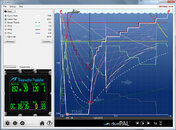- Messages
- 7,659
- Reaction score
- 4,720
- # of dives
- 200 - 499
As I indicated in one of my posts on decompression theory a while ago, in my opinion there is no clear formula on how to determine OGCs, but they seem to me rather empirical constructs determined by trial and error and experience. ...//...
Well finally a solid answer!
...//... Basically, the question is: how much overpressure gradient (by compartment) are you willing to accept? 2 ATM for the fastest compartment? ...//...
I'm sticking with Workman's 1.58
THANKS!!!
---------- Post added February 1st, 2014 at 06:26 PM ----------
Trying to keep this in scope for "Basic Scuba Discussions". This is a decent read for the most interested: http://www.diverclub.ru/File/literatur/understanding_m-values.pdf
Just lightly skimming the article will offer many "hand waving" insights.
---------- Post added February 2nd, 2014 at 01:44 AM ----------
-might just as well give the rest of it. If I have to guess, I only do one deep stop, 2 minutes at this depth:
OGC = 0.69(Max Depth) - 8. Gives the OGC stop in feet.
YMMV...
---------- Post added February 2nd, 2014 at 02:06 AM ----------
And finally, ascent rate varies: http://www.scubaboard.com/forums/co...ascent-rate-speed-comparison.html#post1979863
Last edited:




